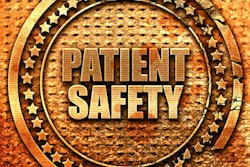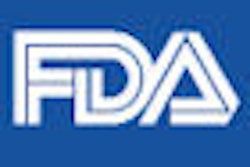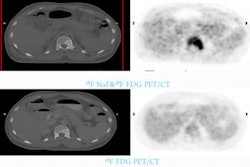The U.S. Pharmacopeial Convention (USP) on February 21 outlined a series of new quality assurance standards for the production and compounding of PET drugs that would cover responsibilities such as personnel training, equipment maintenance, quality control, and labeling and packaging.
The scientific, nonprofit organization issued its proposed revisions to Chapter 823 of the Radiopharmaceuticals for Positron Emission Tomography-Compounding because the document has not been modified since it was published in 1998. Needless to say, there have been dramatic changes through the evolution of the radiopharmaceutical over the past 13 years.
"Today, we have commercial producers who supply most of the PET drugs that are used in diagnostic imaging procedures," said Steve Zigler, PhD, chair of USP's Expert Panel on Chapter 823 and director of the development and engineering at PETNet Solutions. "PET imaging agents also have attracted the interest of pharmaceuticals companies as potential tools to accelerate and reduce the cost of traditional drug discovery efforts."
In addition, clinical applications for PET drugs have expanded to cardiology, oncology, and neurology over the last decade. "It's important that Chapter 823 remains current and adequately addresses this diversity of PET drugs that did not exist when [Chapter 823] was initially published," Zigler added.
FDA cGMP coordination
In addition, the U.S Food and Drug Administration (FDA) current good manufacturing practice (cGMP) recommendations for PET drugs are scheduled to go into effect in December. Certain elements of Chapter 823 are similar to the FDA's cGMP regulations, so it is important to make the necessary adjustments to become consistent with those guidelines, Zigler said.
Among USP's proposed new additions to Chapter 823 is a section that would cover facilities and equipment relative to environmental standards and controls. The revisions include microbiological testing of the environment in which PET drugs are prepared, equipment calibration, and day-of-use checks.
Because the proper cleaning of production equipment is not addressed in Chapter 823, Zigler said there has been some confusion in PET drug production. "Equipment should be cleaned prior to use to ensure the PET drug meets specifications for identity, strength, purity, and quality," he said. "It is acceptable to make multiple batches of [PET drugs] on the same equipment, as long as documents demonstrate the cleaning process is effective."
Adequate training
The revisions also advocate adequate personnel and resources for PET drug production. The section would require PET drug developers and manufacturers to have employees with appropriate education, training, and experience. "The number [of employees] depends on the complexity and size of the operation," Zigler said. "Training experience should include the three important areas of production, testing, and operations."
Another upgrade to Chapter 823 outlines quality assurance and quality control. Quality assurance would include oversight, such as the approval of procedures, product specifications, audits, and corrective actions when necessary. Quality control would detail the execution of those activities.
A proposed section on stability stipulates that PET drugs meet acceptance criteria for shelf life or expiration. It notes that stability should be demonstrated at the highest radioactivity concentration in the container for that particular PET drug, with tests on three batches of the radiopharmaceutical to ensure stability.
Quality control
Acceptance criteria for PET drugs also are among USP's proposed revisions. The changes recommend quality control tests and suitability studies to verify test results under actual conditions for use at a healthcare facility. USP believes that the provision is necessary because the FDA's guidance for traditional radiopharmaceuticals that are "out of specification" (OS) do not apply well to short-lived PET drugs, Zigler said.
"To resolve these shortcomings, the panel felt it was important to describe them, so when a [quality control] result does not meet a predetermined specification, the operator must determine if that OS result is due to analytical error or a true product failure," he added. "The OS result by itself does not mean that the batch fails and must be rejected. If the OS is due to a true product failure, then it must be rejected."
Under the proposed labeling and packaging section, the USP panel recommends detailing information about the PET drug on the final product's vial, rather than the shield or container. The goal is to better notify personnel about the possibility of radiation exposure from the product.
Among the more basic proposed revisions is a section that would define technical terms to ensure constant usage across the PET community. The title for Chapter 823 would be changed to "Positron Emission Tomography Drugs for Compounding Investigation and Research Uses."
Public comment
USP will continue to take public comments on the proposed changes until March 31. "The feedback we have received so far has been largely constructive. The people who have responded have provided us with good suggestions," Zigler said. "By and large, the community understands the need for the revisions, and they have been actively involved in proposing comments and suggestions. We want that to continue."
If there are no significant changes to the revisions, the organization could vote on a final draft in June. If major changes are necessary, USP will republish its proposal and again take public comment.




















